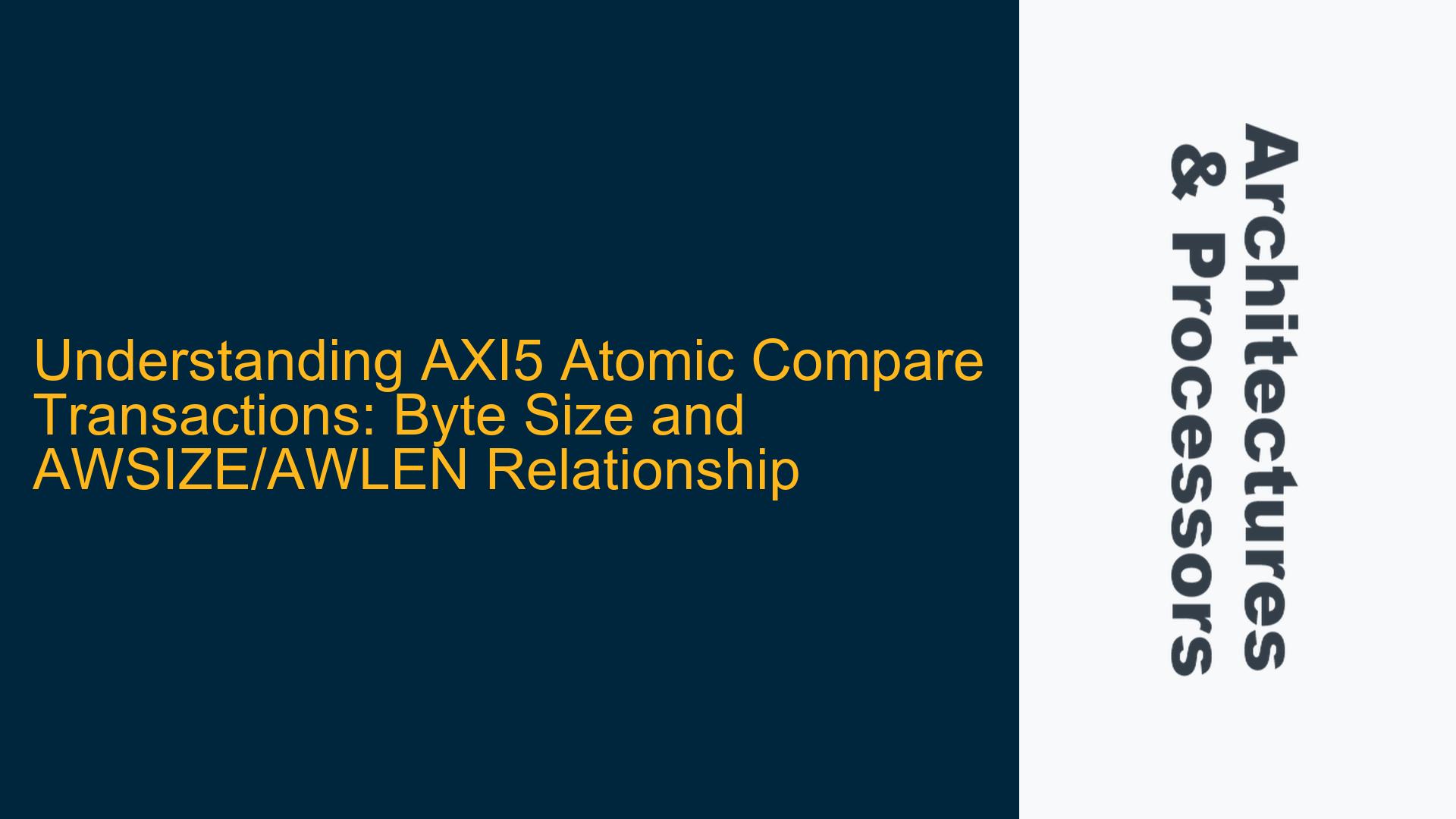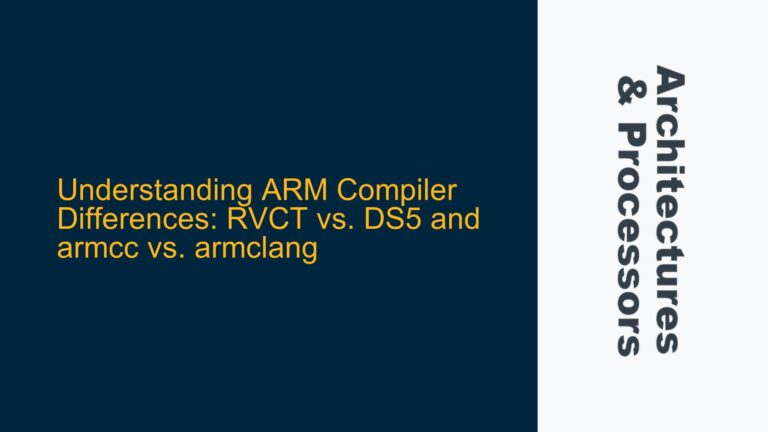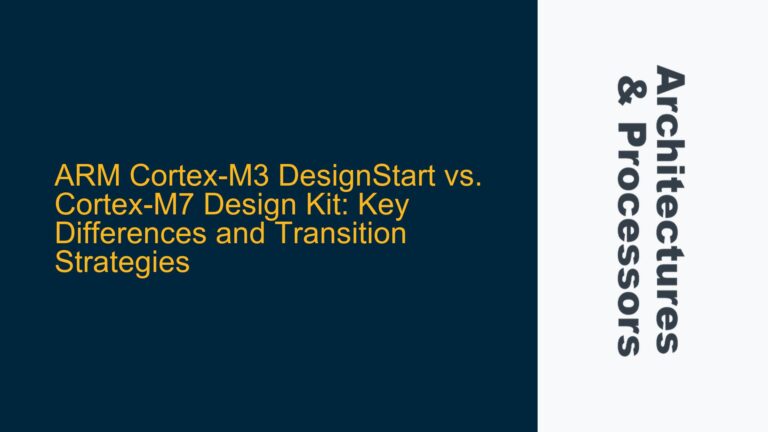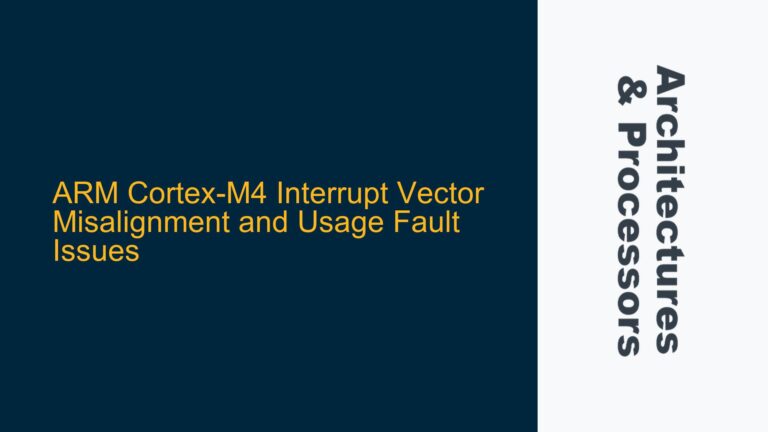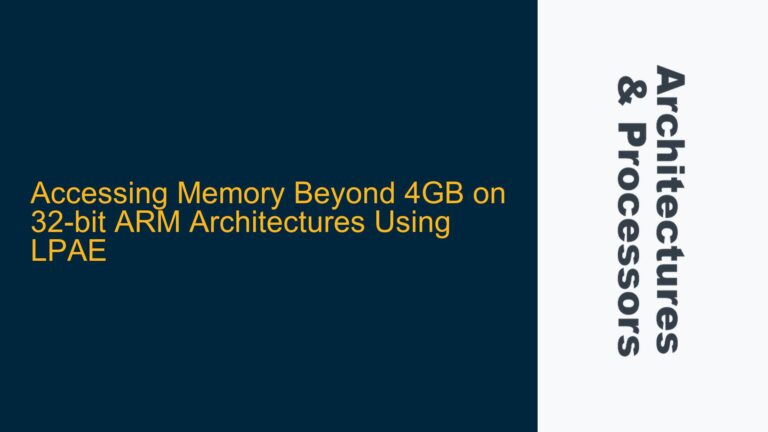AXI5 Atomic Compare Transaction Byte Size Interpretation
In the context of AXI5 (Advanced eXtensible Interface 5) atomic compare transactions, the byte size specification (2, 4, 8, 16, or 32 bytes) is a critical parameter that determines the total amount of data involved in the transaction. This byte size is not merely a reflection of the AWSIZE (Address Width Size) or AWLEN (Address Width Length) individually but is a product of their combined effect. The AWSIZE parameter defines the number of bytes transferred in each beat of the transaction, while AWLEN specifies the number of beats in the burst. The total number of bytes in an atomic compare transaction is calculated as AWSIZE multiplied by (AWLEN + 1). This calculation ensures that the transaction can handle the necessary data volume for both the compare and swap operations, which are fundamental to atomic transactions.
The atomic compare transaction involves two primary data components: the compare value and the swap value. Each of these components occupies half of the total byte size. For instance, in a 16-byte transaction, 8 bytes are allocated for the compare value, and the remaining 8 bytes are for the swap value. The original value at the target memory location is always returned as read data, ensuring that the transaction is both atomic and consistent. This mechanism is crucial for maintaining data integrity in multi-processor or multi-threaded environments where concurrent access to shared memory is common.
Memory Alignment and Data Width Considerations in Atomic Compare Transactions
Memory alignment and data width are pivotal factors in the execution of AXI5 atomic compare transactions. The AWSIZE parameter must align with the natural boundaries of the data width to ensure efficient and error-free transactions. For example, if the AWSIZE is set to 4 bytes, the memory address must be aligned to a 4-byte boundary. Misalignment can lead to performance degradation or even transaction failures, as the AXI5 protocol enforces strict alignment rules to optimize data transfer efficiency.
The data width, which is determined by the AWSIZE, also impacts the overall transaction size. In atomic compare transactions, the data width must accommodate both the compare and swap values. Therefore, the AWSIZE must be chosen such that the total byte size (AWSIZE * (AWLEN + 1)) is sufficient to hold both values. For instance, if the compare and swap values are each 8 bytes, the AWSIZE should be set to 8 bytes, and AWLEN should be set to 1, resulting in a total transaction size of 16 bytes. This ensures that both values fit within the transaction without causing data truncation or overflow.
Moreover, the alignment and data width considerations extend to the read data returned by the transaction. The original value at the memory location must be read and returned in its entirety, adhering to the same alignment and data width rules. This ensures that the read data is consistent with the write data, maintaining the atomicity of the transaction. Proper alignment and data width configuration are therefore essential for the successful execution of AXI5 atomic compare transactions.
Implementing AXI5 Atomic Compare Transactions: Best Practices and Troubleshooting
Implementing AXI5 atomic compare transactions requires careful consideration of several factors to ensure optimal performance and reliability. One of the primary considerations is the configuration of the AWSIZE and AWLEN parameters. These parameters must be set in accordance with the data requirements of the compare and swap operations. For example, if the compare and swap values are each 4 bytes, the AWSIZE should be set to 4 bytes, and AWLEN should be set to 1, resulting in a total transaction size of 8 bytes. This configuration ensures that both values are accommodated within the transaction without exceeding the specified byte size.
Another critical aspect is the handling of cache coherency and memory barriers. In multi-processor systems, cache coherency must be maintained to ensure that all processors have a consistent view of the memory. Memory barriers, such as Data Synchronization Barriers (DSB) and Data Memory Barriers (DMB), should be used to enforce the correct ordering of memory operations. These barriers prevent reordering of memory accesses that could lead to inconsistent data views and potential race conditions.
Troubleshooting AXI5 atomic compare transactions often involves identifying and resolving issues related to misconfiguration of AWSIZE and AWLEN, memory alignment errors, and cache coherency problems. For instance, if a transaction fails due to misalignment, the memory address should be adjusted to align with the AWSIZE boundary. Similarly, if cache coherency issues are detected, appropriate memory barriers should be inserted to enforce the correct ordering of memory operations.
In addition to these considerations, it is essential to validate the transaction using simulation and debugging tools. These tools can help identify potential issues early in the development process, reducing the risk of errors in the final implementation. By following these best practices and troubleshooting steps, developers can ensure the successful implementation of AXI5 atomic compare transactions, achieving both performance and reliability in their embedded systems.
